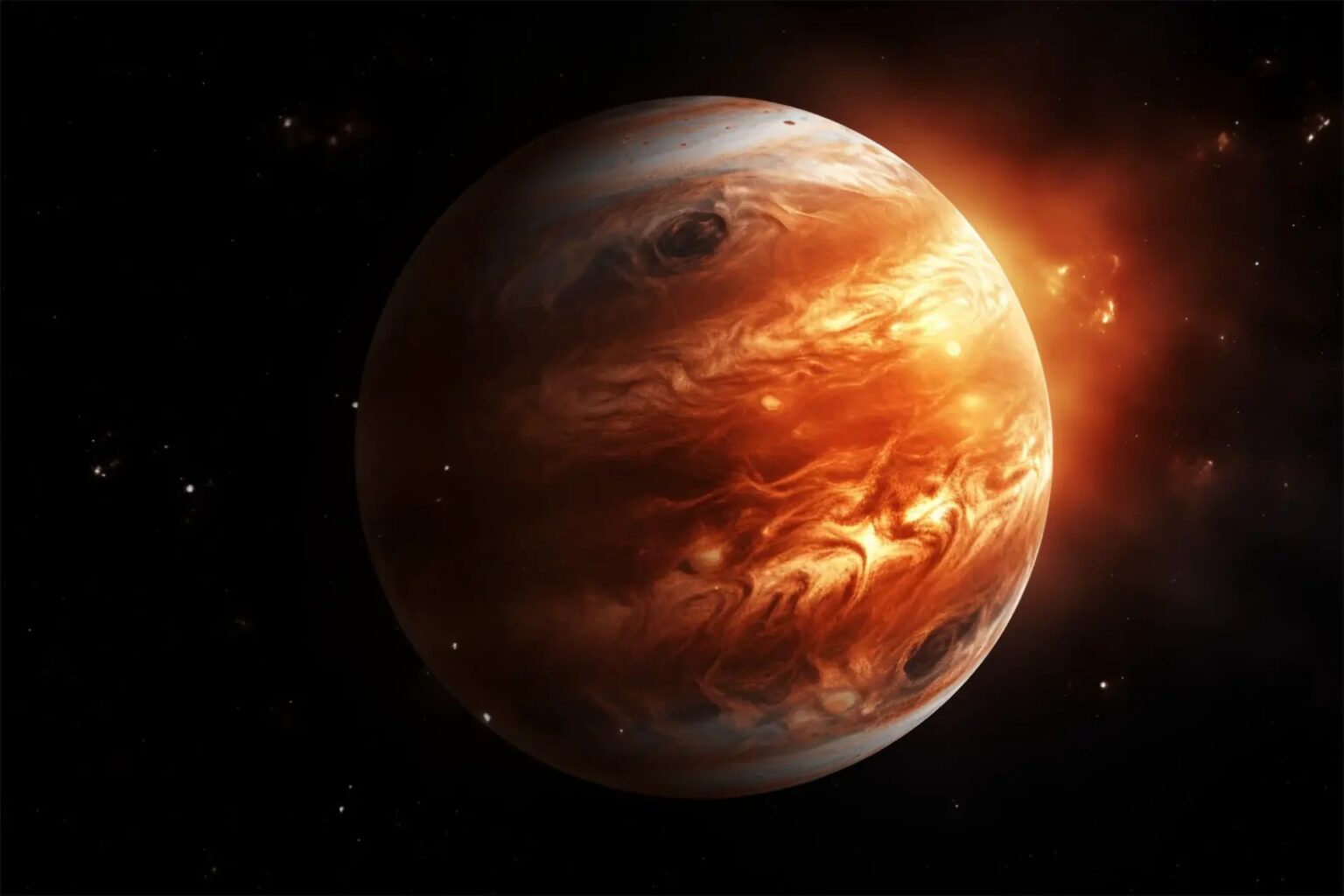Scientists have studied the exoplanet TOI-837 b. It is a distant giant, about the size of Saturn. At the same time, there is an extremely heavy core inside, the mass of which is about 60 percent of the total mass of this celestial body.

Exploring the planet TOI-837 b
European astronomers have conducted photometric and spectroscopic observations of a distant giant exoplanet known as TOI-837 b. As a result, they discovered that it is a gas giant the size of Saturn, which contains a massive core, challenging modern theories of core formation.
TOI-837 b was discovered in 2020. It orbits a young (about 35 million years old) dwarf star of spectral type F9/G0 in the open cluster IC 2602 at a distance of about 465 light-years. A year on the planet is only 8.32 days. It has a radius of approximately 0.77 of the radius of Jupiter. The star TOI-837 is about the size of the Sun, has a mass of about 1.14 solar masses, and its effective temperature is almost 6,000 K.
A team of astronomers led by Oscar Barragan from the University of Oxford, UK, decided to conduct further photometric and spectroscopic observations of TOI-837 b in order to further characterize its properties and nature. For this, they used NASA’s Transiting Exoplanet Survey Satellite (TESS) and various ground-based instruments.
Extremely massive core
Observations have shown that TOI-837 b has a radius of 0.817 of the radius of Jupiter, and its mass is approximately 0.395 of the mass of Jupiter, which gives a density of 0.89 g/cm3. The planet is separated from the star by 0.088 AU, and its equilibrium temperature is about 1,000 K.
Astronomers stressed that the obtained properties of TOI-837 b, mainly its density, young age and distance to the star, suggest that the mass of the core is about 70 Earth masses (0.22 Jupiter masses), which is about 60% of the total mass of the planet.
The researchers note that such a significant core in a relatively young planetary body is a challenge for modern models of planet formation and core accretion, especially due to the relatively low stellar metallicity.
Prospects for further astronomical research
“Our investigation into the TOI-837 system and its intriguing companion, TOI-837 b, unveils a young Saturn-sized exoplanet that defies conventional expectations with its unexpected massive core,” the authors report.
Due to its unique characteristics, TOI-837 b should become an object for in-depth study of the atmosphere. For example, measuring the volume fraction of metals in the planet’s atmosphere can reveal the true nature of its significant core. Such studies can be carried out using the James Webb Space Telescope (JWST).
According to phys.org
Follow us on Twitter to get the most interesting space news in time
https://twitter.com/ust_magazine


